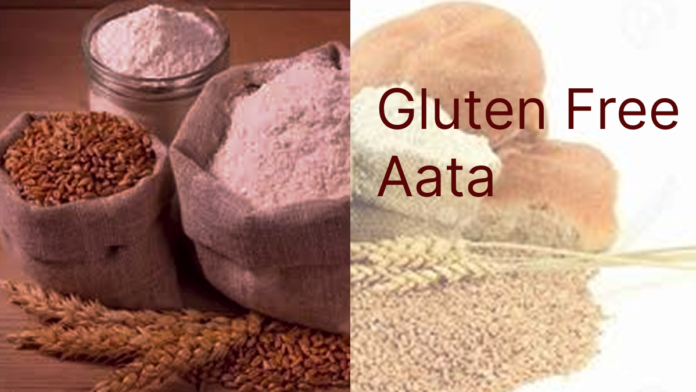I am excited to introduce a special blend of gluten-free flour, which means it contains no gluten—a protein found in wheat, barley, and rye. This blend is perfect for individuals with gluten intolerance or celiac disease.
Gluten-free aata (flour) has gained popularity as more people become aware of gluten-related health issues. But what exactly is gluten, and why do some people avoid it? Let’s break it down in simple terms.
What is Gluten?
Gluten is a protein found in wheat, barley, and rye. It gives dough its stretchy and elastic texture. It helps in holding the shape of baked goods like bread and rotis.
Benefits of Gluten:
Gluten helps make soft and fluffy bread and rotis.
It provides a good source of protein and nutrients.
Harmful Effects of Gluten:
Some people are allergic to gluten (Celiac disease) and cannot digest it.
It can cause bloating, stomach pain, and digestive issues in sensitive individuals.
Gluten leads to inflammation in people with gluten intolerance.
What is Gluten-Free Aata?
Gluten-free aata is flour that does not contain gluten. It is made from alternative grains and ingredients such as:
Rice Flour: Light and easy to digest.
Jowar (Sorghum) Flour: Rich in fiber and nutrients.
Bajra (Pearl Millet) Flour: Good for digestion and energy.
Ragi (Finger Millet) Flour: High in calcium and iron.
Amaranth Flour: Protein-rich and great for immunity.
Besan (Gram Flour): High in protein and commonly used in Indian cooking.
How is Gluten-Free Aata Dough Made?
Making dough from gluten-free aata is slightly different from regular wheat flour. Here’s how to do it:
Use a single gluten-free flour or mix different types for better texture.
Add a Binding Agent: Since gluten-free aata lacks elasticity, add ingredients like:
Flaxseed powder + water (acts like glue)
Psyllium husk
Xanthan gum (optional)
Knead with Warm Water: Gluten-free flour absorbs more water, so use warm water for soft dough.
Let the Dough Rest: Keep it aside for 10-15 minutes to improve texture.
Roll Gently: Use parchment paper or a rolling pin with light pressure to prevent breakage.
Cook on Medium Flame: Roast like regular rotis, but flip carefully to avoid cracking.
Water to Flour Ratio for Gluten-Free Dough.
The proportion of water to flour varies for different gluten-free flours because they absorb water differently. Here’s a general guide:
Ragi (Finger Millet): 1 cup Ragi flour and 1 cup water. Add 1 cup of ragi flour to 1 cup of boiling water and mix it nicely. Cover it for 5 to 7 minutes. Now kneed it for 8 minutes while using hot water.
Rice Flour: 1 cup of rice flour and 2 cups of water. In a pan boil two cups of water. Add the aata, mix well, and knead. Add hot water as required.
Jowar (Sorghum):1 cup aata and1 cup water. In a pan boil one cup of water, mix the flour, and cover it nicely. Now kneed the flour for 2 to 3 minutes.
Bajra (Pearl Millet): The ratio of Flour to water is 1:1. Mix the aata in a boiling water. Cover and kneed.
Maize (Makka): In a pot boil 1 and 1/4 cups of water add 1 cup of maize aata, mix and cover it for 5 minute.
Rajgira (Amaranth): For making Amaranth dough use hot water required to make the soft dough.
Tips for Making Soft Gluten-Free Dough:
Use warm or hot water or boiling water to bind and kneed the flour.
Let the dough rest for 10-15 minutes before rolling.
Add a natural binding agent like flaxseed powder, psyllium husk, or mashed potato.
Knead gently, as gluten-free dough is more delicate than wheat dough.
Roll the rotis gently with a rolling pin.
Gluten-free aata is a great option for people with gluten intolerance or those seeking a healthier alternative. It requires special preparation techniques but is as tasty and nutritious as regular wheat flour. If you’re trying to avoid gluten, switching to gluten-free aata can be a smart and healthy choice!
Would you like specific recipes for any of these flours?
